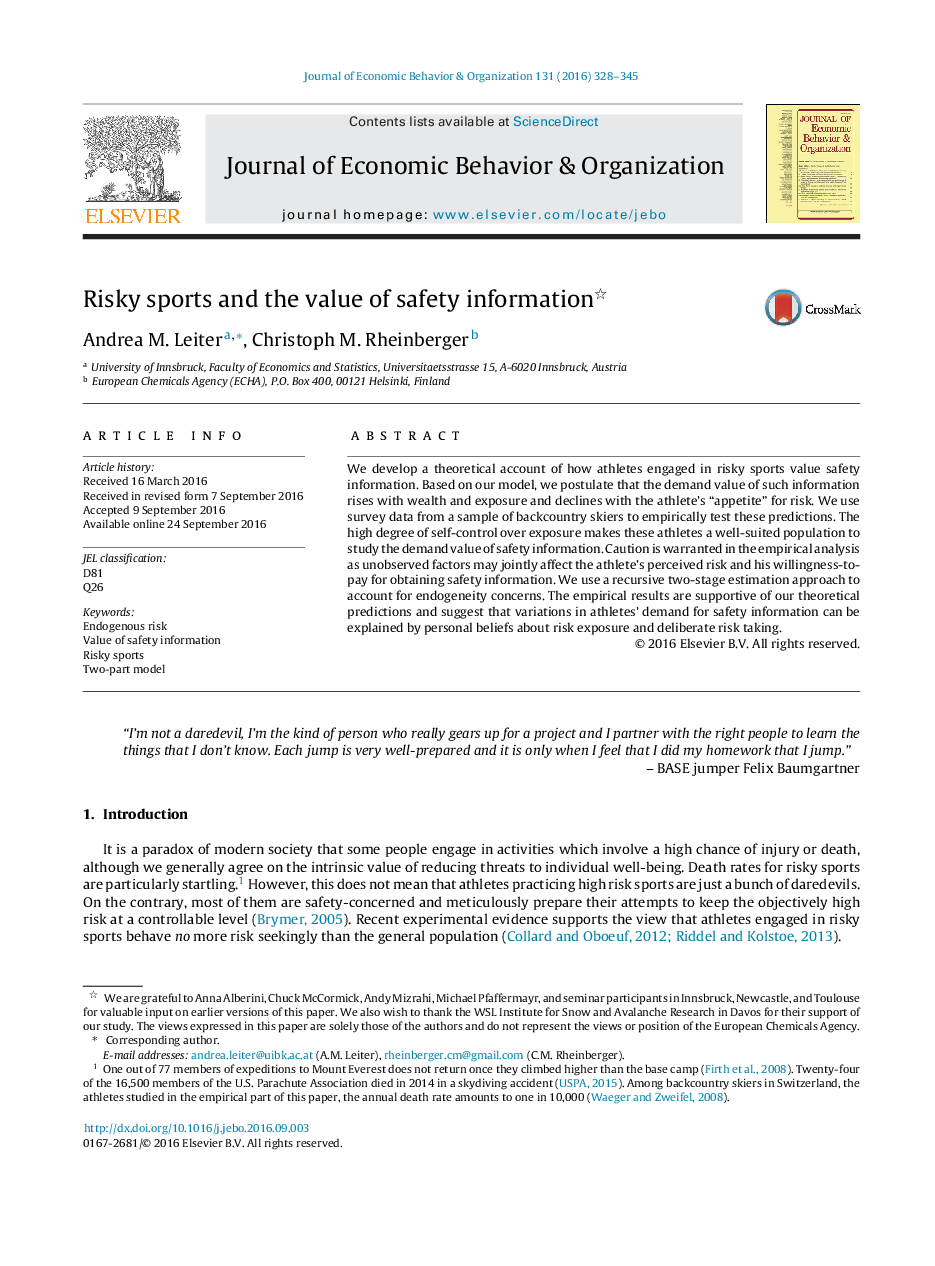| Article ID | Journal | Published Year | Pages | File Type |
|---|---|---|---|---|
| 5034698 | Journal of Economic Behavior & Organization | 2016 | 18 Pages |
â¢We develop a model of how athletes engaged in risky sports value safety information.â¢We survey backcountry skiers to empirically test the theoretical predictions.â¢We use a recursive two-stage estimation approach to account for endogeneity concerns.â¢The empirical results support our theoretical predictions.â¢We find that personal risk beliefs shape athletes' demand for safety information.
We develop a theoretical account of how athletes engaged in risky sports value safety information. Based on our model, we postulate that the demand value of such information rises with wealth and exposure and declines with the athlete's “appetite” for risk. We use survey data from a sample of backcountry skiers to empirically test these predictions. The high degree of self-control over exposure makes these athletes a well-suited population to study the demand value of safety information. Caution is warranted in the empirical analysis as unobserved factors may jointly affect the athlete's perceived risk and his willingness-to-pay for obtaining safety information. We use a recursive two-stage estimation approach to account for endogeneity concerns. The empirical results are supportive of our theoretical predictions and suggest that variations in athletes' demand for safety information can be explained by personal beliefs about risk exposure and deliberate risk taking.
